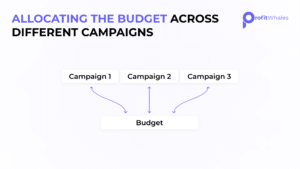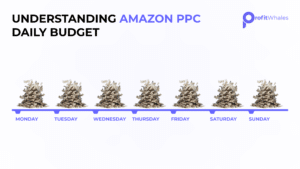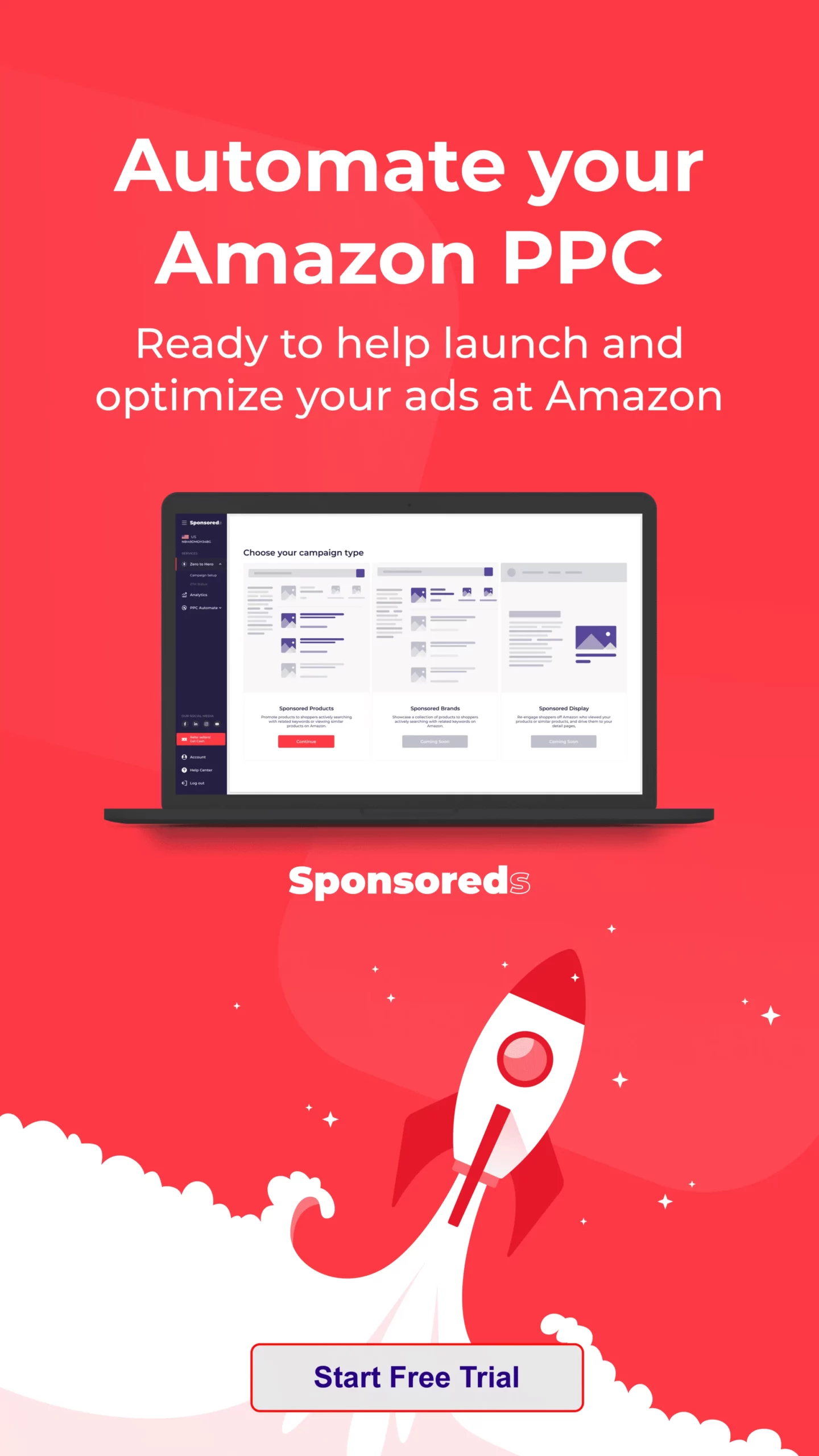Navigating the complexities of Amazon’s PPC advertising requires a well-planned strategy to maximize return on investment (ROI). This guide explores essential elements of Amazon PPC budgeting, offering insights to help you enhance visibility, drive sales, and improve overall marketing efficiency. Whether you’re a seasoned Amazon seller or just starting, managing your Amazon PPC budget effectively can significantly impact your success.
Managing Your Amazon PPC Daily Budget
Managing your Amazon PPC daily budget is crucial for maintaining continuous ad exposure throughout the day. A well-structured daily budget ensures your ads run consistently without exhausting resources too early. However, setting a budget is not enough; active management and adjustments are essential.
Forecasting and Planning: Analyzing past campaign data helps you understand spending patterns and anticipate future needs. For instance, if your sales spike during certain seasons or around holidays, you should plan to increase your daily budget accordingly. Using historical data from Amazon Seller Central, you can predict fluctuations and adjust your daily budget to capture maximum traffic during peak periods.
Consider external factors like economic changes, new product launches by competitors, or shifts in consumer behavior. For example, during economic downturns, consumers may become more price-sensitive, requiring adjustments to your PPC strategy, such as focusing on value-driven keywords. Forecasting these variables allows for better budget planning and helps avoid overspending.
Real-Time Monitoring: Implement systems that track your spending in real time. Amazon offers tools that allow you to monitor your daily budget, which is crucial for reacting swiftly to changes in ad performance. For example, suppose your ad spend is higher than expected in the morning but drops off in the afternoon. In that case, adjust your budget allocation to ensure even daily distribution.
Real-time monitoring is particularly important during peak shopping seasons like Black Friday or Prime Day when competition for ad space intensifies and costs rise. By closely monitoring your campaigns during these periods, you can quickly adjust bids and budgets, ensuring competitiveness without overspending. Additionally, real-time monitoring helps identify underperforming campaigns early, allowing you to reallocate your budget to more effective ones, maximizing ROI.
Dynamic Adjustments: Adopt a responsive approach to your daily budget by adjusting your spending based on ongoing campaign performance and market conditions. This flexibility helps you stay competitive throughout the day by scaling up during high-engagement periods or scaling down during lulls. Amazon PPC budget calculators can help make informed decisions about reallocating your budget throughout the day.
Dynamic adjustments are particularly useful when launching new products or entering new markets. For instance, if you’re introducing a new product, start with a higher daily budget to generate initial visibility and sales. Adjust your budget based on performance and market reception as the product gains traction and receives reviews. Similarly, when expanding into a new market, adjust your budget to account for different consumer behaviors and competition levels in that region.
Understanding Amazon PPC Bid Strategies
Your Amazon PPC bid influences the competitiveness and visibility of your ads. Developing an effective bid strategy is essential for optimizing your budget and ensuring your ads are both cost-effective and competitive.
Understanding Bid Mechanics: Amazon operates on a dynamic auction-based model, where you pay only slightly more than the next highest bidder. Placing bids that are high enough to win placements but low enough to maintain cost efficiency is key. For example, if your target ACoS (Advertising Cost of Sale) is 20%, ensure your bid doesn’t exceed what you can afford based on your product’s profit margins.
To optimize bids, use tools like Amazon’s Bid+ feature, which automatically increases your bid by up to 50% when your ad is eligible for top placements. This is particularly effective for competitive keywords where top placement can boost visibility and sales. However, monitor the impact of Bid+ on your ACoS and overall budget to ensure it delivers a positive ROI.
Keyword Value Assessment: Regularly assess the performance and value of specific keywords. Keywords that historically drive conversions should receive higher bids, while poor performers should have bids reduced or excluded. This strategy optimizes spend and ensures your ads reach the most relevant audience. Tools like the Amazon PPC structure and budget calculator streamline this process.
Consider using long-tail, less competitive keywords but more specific to your product offerings. Long-tail keywords often have lower CPCs (cost per click) and can deliver higher conversion rates by targeting specific search queries. For example, instead of bidding on the broad keyword “running shoes,” bidding on “women’s lightweight running shoes size 8” is more likely to attract buyers with clear purchase intent.
Leveraging Automation Tools: Amazon offers automated bidding features that adjust bids in real time based on conversion probability. These tools enhance your bidding strategy by dynamically responding to changing competition levels and customer engagement. If your ad’s performance improves during a particular time, the automation tool can increase your bid to maximize visibility.
Automated bidding helps manage large-scale campaigns efficiently. Manual bid adjustments can become time-consuming and error-prone if you’re running multiple campaigns across different products or markets. Amazon’s automated bidding tools optimize your bids for maximum performance without constant manual intervention. However, regularly review automated bids to ensure they align with your overall campaign goals.
Allocating the Budget Across Different Campaigns
Strategic budget allocation across various campaign types is essential for maximizing effectiveness. Understanding the unique roles of different ad formats and allocating your PPC budget accordingly is crucial.
Performance-Based Prioritization: Constantly evaluate each campaign type—Sponsored Products, Brands, and Displays. Allocate a higher budget to campaigns, consistently delivering solid results and scaling back on those not meeting performance benchmarks. For example, if Sponsored Products drive most of your sales, they should receive the lion’s share of your PPC budget.
When allocating your budget, consider the lifecycle stage of your products. New products may require a higher budget for Sponsored Products to gain visibility. In contrast, well-established products with consistent sales may benefit from increased spending on Sponsored Brands to build brand awareness and customer loyalty. Regularly review campaign performance data and adjust budget allocation based on which campaigns deliver the highest ROI.
Balanced Allocation Strategy: Maintain a strategic balance between immediate sales and long-term brand development. While Sponsored Products are essential for short-term sales, Sponsored Brands and Sponsored Display campaigns are crucial for building brand awareness and customer engagement. Allocating your budget between these campaign types ensures a holistic approach to your Amazon PPC efforts.
Consider the buyer’s journey when allocating your budget. Sponsored Products are ideal for capturing demand at the consideration and purchase stages, where shoppers are ready to buy. In contrast, Sponsored Brands and Sponsored Display campaigns are more effective at the awareness and interest stages, introducing your brand and products to potential customers. Aligning your budget allocation with the buyer’s journey creates a more cohesive and effective PPC strategy.
Sponsored Products vs. Sponsored Brands
Sponsored Products: These ads boost direct sales by leading shoppers to your product listings. They are particularly effective for capturing demand at the point of purchase, making them a critical component of your PPC budget strategy. For instance, allocate a significant portion of your Amazon PPC budget to Sponsored Products if your primary goal is immediate sales.
Sponsored Products are flexible and can be used for various goals, including product launches, seasonal promotions, and clearance sales. Because they target shoppers with high purchase intent, they often deliver a strong ROI, making them a key component of any Amazon PPC strategy. Regularly optimize your Sponsored Product campaigns by refining keyword targeting, adjusting bids, and testing different ad creatives to ensure continued effectiveness.
Sponsored Brands: These ads focus on increasing brand awareness and establishing brand loyalty. They often feature a brand logo, headline, and multiple products to engage customers at the top of the sales funnel. While Sponsored Brands may not drive immediate sales, their role in building a long-term customer base is invaluable. Therefore, reserve a portion of your PPC budget for these campaigns to support long-term business goals.
Sponsored Brands ads effectively promote your brand identity and drive traffic to your Storefront or a curated landing page. They allow you to showcase your brand story and highlight key product features, helping to differentiate your brand from competitors. Investing in Sponsored Brands builds a stronger brand presence on Amazon, leading to increased customer loyalty and repeat purchases.
Strategies for Effective Budget Allocation
Effective spending requires a comprehensive approach that considers immediate needs and long-term objectives. Budget allocation is not a one-time task but an ongoing process requiring regular review and adjustment based on performance data and market conditions.
Holistic View:
- Integrate overall business objectives with campaign planning.
- Consider how each campaign contributes to immediate sales and long-term business goals, ensuring a balanced allocation that supports sustained growth.
- While a large part of your budget may focus on campaigns that drive immediate sales, allocate funds to campaigns that build brand recognition over time.
Align your PPC strategy with broader business goals. For instance, if your goal is to increase market share in a specific category, allocate more budget to Sponsored Brands and Sponsored Display campaigns to raise brand awareness and attract new customers. Conversely, if you focus on maximizing profitability, prioritize sponsored campaigns focusing on high-margin products and efficient keyword targeting. Aligning your PPC budget with business objectives creates a more cohesive and effective marketing strategy.
Responsive Adjustments: Stay flexible and responsive to real-time data and market trends. This dynamic approach allows you to shift budgets quickly between campaigns based on performance and emerging opportunities. If a particular keyword suddenly becomes more competitive, increase your bid or reallocate your budget to maintain your ad’s visibility.
Responsive adjustments are crucial in fast-paced markets where consumer behavior and competition change rapidly. During a major shopping event like Prime Day, increase your budget for high-performing campaigns or temporarily pause underperforming ones to maximize ROI. Similarly, if you notice a decline in sales for a particular product, shift your budget to more profitable products or explore new keywords and ad formats to rejuvenate your campaigns.
Factors Shaping Amazon PPC Expenditure
External and internal factors impact your PPC spending, making it essential to remain vigilant and adaptable. Understanding these factors helps make more informed decisions about budget allocation and overall PPC strategy.
Market Dynamics: Monitor industry trends, competitor activities, and shifts in consumer behavior closely. Understanding these factors helps anticipate changes in the marketplace and adapt strategies accordingly. Adjust your budget to maintain your competitive edge if a competitor increases their ad spend.
Macroeconomic factors like inflation, supply chain disruptions, or changes in consumer confidence can also influence market dynamics. During an economic downturn, consumers may become more price-sensitive, requiring adjustments to your PPC strategy, such as focusing on value-driven keywords or promotions. Staying attuned to these external factors allows for informed decisions about your PPC budget, ensuring your campaigns remain competitive and effective.
Regulatory Changes: Stay informed about updates in advertising regulations or changes in Amazon’s policies that could affect campaign strategies and budget allocations. For example, if Amazon introduces new ad formats or changes how bids are calculated, adjust your strategy to stay compliant and competitive.
Regulatory changes can also impact specific product categories or industries. If you sell products in a highly regulated industry like healthcare or financial services, you may need to comply with additional advertising guidelines or restrictions. Staying informed about these changes and adjusting your PPC strategy accordingly can help avoid penalties or disruptions to campaigns.
The Impact of ACoS on Your Amazon PPC Budget
Optimizing your Advertising Cost of Sale (ACoS) ensures that advertising efforts are cost-effective and contribute positively to your bottom line. ACoS is a critical metric that measures the efficiency of your ad spending relative to the revenue generated by your ads.
Profit Margin Alignment: Adjust your ACoS targets to match your product’s profit margins, ensuring your advertising efforts contribute positively to your bottom line without eroding profits. For example, if your product has a 30% profit margin, your ACoS should ideally be below 30% to ensure your advertising efforts generate a positive ROI.
Consider your customers’ lifetime value (LTV) when setting ACoS targets. Suppose your products have a high repeat purchase rate or you offer complementary products. In that case, you may accept a higher ACoS on the initial sale to acquire a new customer, knowing the customer will generate additional revenue over time. Aligning your ACoS targets with both profit margins and customer LTV creates a more sustainable and profitable PPC strategy.
Efficiency Improvements: Focus on strategies to enhance ad efficiency, such as refining target keywords, improving ad placements, and optimizing ad content. These improvements can help reduce ACoS by increasing revenue per dollar spent. For instance, using negative keywords to exclude irrelevant searches improves ad relevance and reduces wasted spend.
Improving efficiency also involves optimizing product listings to increase conversion rates. High-quality images, detailed product descriptions, and cheerful customer reviews increase conversion rates, lowering ACoS. Regularly reviewing and optimizing product listings is crucial for maintaining ad efficiency and ensuring your PPC budget is used effectively.
The Role of CTR and Conversion Rates in Amazon PPC
Click-through rate (CTR) and conversion rates are pivotal metrics indicating how effectively your ads engage potential customers. High CTR and conversion rates indicate a well-targeted and effective PPC campaign, while low metrics signal the need for adjustments.
Ad Relevance: Continuously improve ad relevance by aligning them more closely with user search intents and preferences. This enhances CTR and improves conversion rates by delivering a more targeted advertising experience. For example, using long-tail keywords matching specific customer searches improves CTR and conversion rates.
Improving ad relevance also involves testing different ad formats and creatives. If you’re running Sponsored Display ads, experiment with different ad images or headlines to see which resonates most with your target audience. Similarly, for Sponsored Brands, test different landing pages or product collections to determine which drives the highest engagement and conversions. Regularly testing and optimizing your ads ensures they remain relevant and effective.
Optimization Techniques: Regularly employ A/B testing to experiment with various elements of your ads, such as imagery, headlines, and calls to action. Analyze results to determine which combinations perform best, refining your approach and boosting overall ad performance. Testing different ad copy variations helps identify messages that resonate most with your audience.
Conversion rate optimization (CRO) is another crucial aspect of improving PPC performance. Analyze the customer journey from the initial ad click to the final purchase and identify friction points preventing conversions. If you notice a high bounce rate on your product detail pages, improve page load speed, simplify checkout, or provide more detailed product information to reassure potential buyers. Optimizing the customer journey increases conversion rates and maximizes PPC ROI.
Crafting Your Amazon PPC Advertising Budget
Developing a well-structured Amazon PPC advertising budget is foundational to successful advertising. It requires an in-depth understanding of the marketplace, strategic resource allocation, and continuous adjustment to adapt to changing market conditions. This process involves setting realistic budget goals, monitoring campaign performance, and making data-driven adjustments to optimize spending.
When crafting your PPC budget, consider short-term and long-term goals. If you aim to increase market share in a competitive category, allocate a larger budget to Sponsored Brands and Sponsored Display campaigns to raise brand awareness and attract new customers. Conversely, if focused on maximizing profitability, prioritize Sponsored Products campaigns with high-margin products and efficient keyword targeting. Aligning your PPC budget with business objectives creates a more cohesive and effective marketing strategy.
Navigating Seasonal Trends with Your PPC Budget
Adjusting ad spending to accommodate seasonal trends effectively ensures campaigns are optimized for peak efficiency throughout the year. Plan for these variations by increasing your budget during high-demand periods to capture increased sales opportunities and reducing spend during slower periods to maintain efficiency. During the holiday season, allocate a larger portion of your Amazon PPC budget to capture the surge in shopper activity.
Seasonal trends vary depending on your product category and target market. If you sell outdoor equipment, you might see a spike in sales during spring and summer, while if you sell gifts or holiday decorations, your busiest period may be the weeks leading up to Christmas. Analyzing your sales data and understanding seasonality helps you plan your PPC budget more effectively, maximizing ROI during peak seasons.
Assessing Return on Investment (ROI) in Amazon PPC
Regularly evaluating ROI from your PPC campaigns is essential for measuring success and guiding future budget decisions. This involves tracking direct sales impacts and considering how PPC contributes to broader marketing objectives like brand awareness and customer acquisition. Regularly reviewing PPC performance data helps make informed decisions on budget adjustments to maximize ROI.
ROI assessment should account for both short-term and long-term campaign impacts. While a Sponsored Products campaign may deliver immediate sales, a Sponsored Brands campaign may have a longer-term impact by increasing brand recognition and customer loyalty. Analyzing ROI for each campaign type helps understand how they contribute to overall marketing goals, informing budget allocation decisions.
Bottom Line
Establishing and managing your PPC budget may seem daunting, especially when you’re responsible for multiple campaigns running simultaneously. However, it’s essential to remember that while setting an effective budget is critical, the real key to success lies in how well you manage and optimize your campaigns over time. Once your budgetary framework is in place, your focus should shift to the continuous, meticulous management of each campaign, ensuring they are aligned with your broader business goals and adjusted to maximize performance.
This ongoing process requires attention to detail, regular analysis, and strategic adjustments, but when executed with precision, it can deliver exceptional results that go beyond just hitting your ROI targets. By prioritizing performance over budgetary constraints, you’ll be better equipped to adapt to market changes, outmaneuver competitors, and drive sustainable growth.
If you’re eager to witness these outcomes firsthand, don’t navigate this journey alone. Visit Profit Whales to explore our comprehensive Amazon PPC management services. Whether you’re looking to fine-tune your existing strategies or start from scratch, our expert team is here to help. Schedule a complimentary consultation today, and let us partner with you to steer your campaigns toward unparalleled success.
FAQ
How often should I review my advertising budget on Amazon?
It’s advisable to review your advertising budget on Amazon at least once a month to ensure it aligns with your sales performance and market conditions. Consider reviewing and adjusting your budget more frequently during peak sales periods like holidays or promotions to capitalize on increased traffic.
What are common mistakes sellers make when setting up Amazon PPC campaigns?
Common mistakes include not optimizing keyword selections (either ignoring long-tail keywords or overbidding on highly competitive ones), setting incorrect daily budgets (too high leading to wasteful spending or too low missing potential sales), and neglecting to adjust bids based on performance data. Additionally, failing to use negative keywords to exclude unwanted traffic can result in inefficient spending.
How do I choose the right keywords for my Amazon PPC campaigns?
To choose the right keywords for your Amazon PPC campaigns, use Amazon’s tool to find relevant keywords matching your product features and customer search behavior. Include a mix of high-volume keywords for broader reach and long-tail keywords for targeted searches. Regularly analyze the performance of your keywords and adjust your strategy based on which ones are driving conversions.
How does automatic targeting work in Amazon PPC?
Automatic targeting in Amazon PPC allows Amazon to use its algorithms to select keywords and shopper searches based on the product information you provide. This method can be useful for new sellers or those unfamiliar with keyword research, as it relies on Amazon’s extensive data to target relevant audiences. However, it often requires adjustments and refinements to optimize spend and reach the most profitable segments.
Can I run Amazon PPC campaigns for new products?
Yes, running Amazon PPC campaigns for new products is highly recommended. They help increase visibility and accelerate the accumulation of sales data and customer reviews. Start with an aggressive strategy to gain traction, and adjust your budget based on the product’s performance and market feedback.








